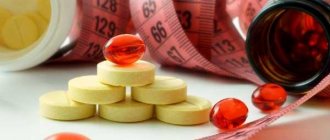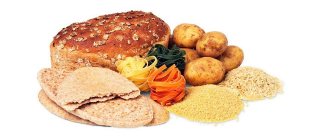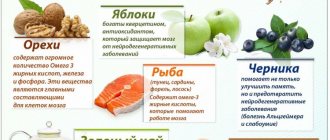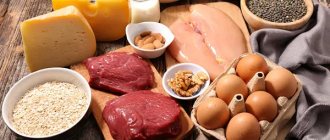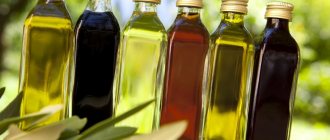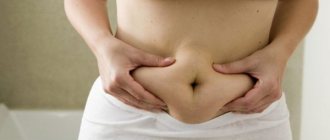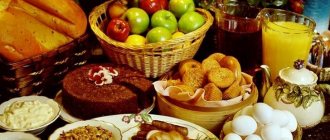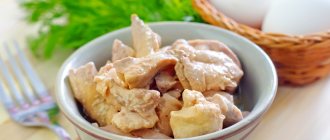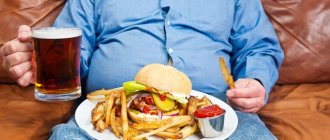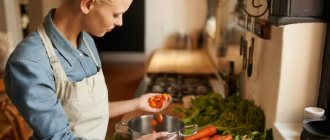The health of our body depends not only on what we eat, drink and what kind of lifestyle we lead. One of the important points is the ability to cleanse our body and internal organs of toxins and waste.
Even if you eat right, watch what cosmetics you use, try to exercise regularly, the environment, one way or another, will do its job. Food products contain harmful additives, and the entire periodic table can be found in the air we breathe.
Our liver takes the entire toxic blow, since it is this gland that is the main filter for all kinds of poisons.
According to research, a person's diet directly affects the health and functioning of the liver.
Scientists claim that some foods have hepatoprotective properties and also cleanse the liver of harmful substances. It is these products that we will talk about in this article.
Sample menu for 7 days
For convenience, we have compiled an approximate menu for each day of the week, which you can use as the basis for your diet for liver detoxification.
First day
- Breakfast - Boiled oatmeal, one apple, a glass of green tea;
- Lunch - Vegetable broth, a slice of cottage cheese casserole, dried fruit compote;
- Afternoon snack - A slice of Belyov marshmallow, a cup of green tea;
- Dinner - Boiled chicken breast with a side dish of vegetables, herbal tea.
Second day
- Breakfast - Curd mixture with fruit, half an avocado, herbal tea;
- Lunch - Before eating, rosehip decoction, steamed fish with prunes and walnuts, tea;
- Afternoon snack - A glass of kefir;
- Dinner - Buckwheat with a couple of turkey cutlets, compote.
Third day
- Breakfast - Millet porridge, a handful of dried fruits, herbal tea;
- Lunch - Vegetable soup with cereals, a couple of slices of black bread, rose hip decoction;
- Afternoon snack - Natural yogurt, a couple of diet breads;
- Dinner - Omelette on water with herbs, mint tea.
Fourth day
- Breakfast - Pumpkin porridge, tea with mint;
- Lunch - Broccoli soup, a couple of slices of rye bread, herbal infusion;
- Afternoon snack - Banana, glass of kefir;
- Dinner - Baked chicken fillet with herbs, boiled rice, compote.
Fifth day
- Breakfast - Spelled porridge, a glass of freshly squeezed apple juice;
- Lunch - Pumpkin puree soup, vegetable salad, glass of tea;
- Afternoon snack - Grapefruit;
- Dinner - Boiled rice with vegetables, mint tea.
Sixth day
- Breakfast - Wheat porridge, a cup of green tea;
- Lunch - Cabbage soup, a couple of slices of rye bread, dried fruit compote;
- Afternoon snack - Biscotti, kefir;
- Dinner - Baked trout with lemon and herbs, a side dish of vegetables, oatmeal broth.
Seventh day
- Breakfast - Fruit salad with natural yogurt, mint tea;
- Lunch - Broth with cereal, freshly squeezed grapefruit juice;
- Afternoon snack - Any fruit;
- Dinner - Baked potatoes, steamed fish, a glass of mint tea.
Reviews and results
A diet for liver restoration, according to patient reviews, quickly normalizes its function. After 2-3 weeks of being on a diet, signs of liver cleansing appear: bitterness in the mouth disappears, general condition and complexion improve, heaviness in the right hypochondrium decreases, belching disappears. Reviews indicate that the diet is easily tolerated and you can stay on it for a long period of time.
- “... Lately I began to notice that after gatherings with friends, I began to experience pain in the right hypochondrium, belching, and an unhealthy complexion. Fortunately, my sister is a doctor. She advised me to cleanse my liver. She recommended taking a course of hepaprotectors - Phosphogliv, folic and lipoic acid, vitamin B6, B12. She adjusted her diet and recommended not taking any alcohol for at least a month. I took up physical exercise and bought myself an orbitrek. My health improved after two weeks. And I like my new sensations of a healthy body, I think that I will regularly restore my liver, and look at my diet more carefully.”
- "… I am 43 years old. In my youth I suffered from viral hepatitis A. Since then I have been constantly supporting my liver function. I don't take any special medications. I only use milk thistle. At first, after visiting my grandmother, I used milk thistle oil and infusion. And later, on the advice of a doctor, he switched to ready-made pharmaceutical preparations - Karsil, Gepabene, Silibinin, milk thistle oil and meal. The liver practically does not bother me. But still, in the summer I periodically go on a diet, when there is a lot of greens, vegetables and fruits. I practically don’t eat anything fatty and limit foods with various nutritional additives.”
What should you exclude from your diet?
In order for the cleanse to be truly effective, you should permanently eliminate certain types of foods from your diet. These include:
- All simple carbohydrates . It is especially important to limit the consumption of sweets and starchy foods, which, when broken down in the gland, sharply increase blood sugar levels;
- Soda, sweet drinks, lemonades, store-bought juices and compotes . In addition to their obvious ability to increase blood sugar levels, they also contain a huge amount of preservatives, flavor enhancers, thickeners, dyes, etc.;
- Products with a large number of preservatives, stabilizers and flavors . This includes sausages, sausages, canned products, ham, smoked products, factory-produced meat and fish products. This also includes various store-bought sauces and seasonings (mayonnaise, ketchup, etc.);
- Alcohol products . Alas, if you decide to keep your liver healthy, then you need to give up alcohol-containing drinks. This is especially true for beer and various energy drinks. We discussed 6 consequences of alcohol consumption for the liver in a separate article;
- Some varieties of fish . It has been proven that certain types of fish can accumulate mercury. These varieties include tuna (bigeye, longfin), mackerel, swordfish, shark, and marlin.
General rules
The liver is the most important organ that performs the main detoxification function in the body, i.e. cleansing the blood of aggressive hepatotoxic external/internal factors that enter the body both from the outside and those formed during metabolism . Any negative acute/long-term effects on the liver lead to dystrophic changes in hepatocytes and liver structure of various types with disturbances in the processes of detoxification , metabolism, and immune response. Unlike other organs of the body, the liver has a unique ability to heal itself, and this property allows patients with liver diseases (impaired function) to continue to feel satisfactory for a long time. The main factors that have a negative impact on the liver and its recovery are: chronic/acute alcohol intoxication , medications, infectious diseases (viral, bacterial, parasitic), poor diet (fast food, products containing food additives, preservatives, dyes, flavor enhancers) , aggressive environmental environment, sedentary lifestyle.
It is necessary to understand that even in cases where acute liver damage ends in recovery and does not become a chronic process, the “costs” of the damage remain and are manifested by increased sensitivity of the liver to various damaging agents, a certain degree of dystrophy, and enzymatic failure, which contribute to the development of functional inferiority.
In this regard, so-called “liver cleansing methods” at home have become widespread. Various web resources offer many popular cleaning methods and recipes for preparing various folk remedies yourself at home. It should be said right away that, as such, “cleansing” the liver does not exist in principle, and the proposed methods do not have a reliable evidence base.
It is more correct to use the term “liver cleansing” to mean the process of restoring the structure and function of the liver. In this regard, the question arises: is it possible to effectively cleanse the liver at home and, if so, in what way, and if not, what are the alternative ways to restore the damaged structure and function of hepatocytes , as well as the hepatobiliary system as a whole?
First, let's look at methods of cleansing the liver using folk remedies. As you know, folk remedies suggest various products to cleanse the liver. The most commonly suggested liver cleansing methods are: oats, rose hips, buckwheat, apple juice, raisins, olive oil, pumpkin, milk thistle, Allohol and magnesia . We will not give a description of each of this method. They are given in almost every article on the topic of liver cleansing. Let's consider what these methods are based on and their positive and negative sides.
Most of them are based on the tubage , which consists of taking choleretic drugs while simultaneously heating the liver area with a heating pad to accelerate enzymatic reactions and increase blood flow in the liver vessels. Used to increase bile secretion, enhance contraction and tone the gallbladder to prevent bile stagnation. For this purpose, a decoction of rose hips, Allochol , olive oil in combination with lemon juice, magnesia , and sorbitol .
However, despite the increase in the secretory function of the liver and the gastrointestinal tract as a whole, the possibility of eliminating congestion with these methods of liver cleansing, especially with an aggressive procedure (especially with vegetable oil), there is a high risk of dyspeptic disorders and increased pain in the liver area. In addition, increased secretion of bile is contraindicated in case of cholelithiasis , biliary obstruction and a number of liver diseases in which stimulation of bile secretion is undesirable, as well as in acute/exacerbation of chronic pancreatitis , nonspecific ulcerative colitis , enteritis , peptic ulcer of the stomach and duodenum.
Since most people using gallbladder stimulation at home do it without first examining the condition of the liver/gallbladder, there is always a risk of causing a complication. In addition, heating the liver without the instructions of a doctor can cause internal bleeding, and this is prohibited for a number of diseases (inflammation of the pancreas, peptic ulcer , gastritis ). Therefore, we must disappoint those who believe that “cleansing” the liver at home is a harmless procedure and will not bring any harm in any case and advise them not to take risks.
Recommendations for cleansing the liver with such decoctions/foods as oats, buckwheat, raisins, pumpkin, apple juice, in our opinion, can rather be attributed to dietary features if it is necessary to improve liver function. They do not have any specific effect on the liver. The use of these products and decoctions based on them has a gentle effect on the gastrointestinal tract, including the liver/gallbladder. In addition, they contain a wide range of vitamins and macro / microminerals , which ensures the necessary level of vitamins and minerals in the body.
Medicinal herbs (preparations based on them) deserve special attention for cleansing the liver, as they have a milder effect on the liver than true/synthetic choleretics . They contain various essential oils, terpenes , phytoncides , saponins , phytosterols , flavones , resins, glycosides , tannins, ascorbic acid , flavonoids , bitterness. Medicinal herbs such as birch buds have a pronounced choleretic effect (choleretic); turmeric root, buckthorn bark, milk thistle, corn silk, immortelle flowers, calamus rhizome, roots/leaves, nettle leaves, centaury grass, rose hips, tansy leaves/flowers, olive oil/fir, coriander fruits, horseradish root juice, rowan fruits, oregano herb, carrot seeds, black radish juice, lily of the valley herb, knotweed herb; wormwood grass, mackerel leaves.
Cholekinetic effect (promoting the release of bile from the gallbladder) has lingonberry leaves, calamus rhizomes, knotweed herb, dandelion roots, caraway fruits/herb, barberry leaves, coriander/juniper/cumin/sunflower oil, juniper fruits, cranberry juice, oregano herb, calendula/immortelle/chamomile flowers, fennel fruits.
The recipe for various liver herbs can be found in specialized literature and, having purchased raw materials at the pharmacy, prepare the infusions yourself, however, in practice, ready-made pharmacy herbal infusions for cleansing the liver are most often used - Hepatofite , Fitolux , liver syrup, liver teas or preparations based on medicinal plants.
What is the algorithm of action if it is necessary to normalize liver function?
First of all, you need to switch to dietary nutrition for a period of 3-4 weeks. Just being on a diet helps restore the liver. Moreover, taking various drugs to restore the liver can only be carried out against the background of dietary nutrition. The cleansing diet is based on treatment table No. 5 according to Pevzner (or its variations for existing liver diseases). Its goal is to protect the organ from adverse factors, improve the processes of bile secretion and bile secretion, normalize lipid metabolism at the physiological rate of intake of all food macro/micronutrients into the body.
The diet includes limiting the content of refractory fats, sodium chloride (up to 6-9 g/day), sausages, canned fish and meat, chicken egg yolks, fatty dairy/fermented milk products, legumes, semi-finished products, baked goods, fast food products, products containing purine bases - by-products of various animals (liver, heart, kidneys, tongue), sardines, sprats, yeast, herring, chocolate, cocoa, seafood, dried porcini mushrooms.
Products/dishes that irritate the gastrointestinal mucosa and liver, containing extractive substances and essential oils are limited - meat/fish broths, turnips, radishes, smoked meats, radishes, garlic, dried/fried foods, green onions, sorrel. Drinking alcohol is prohibited.
The main products included in the diet are dietary varieties of boiled meat/fish, low-fat dairy products, cereal soups/weak vegetable broths, well-cooked cereals, vegetables, white crackers, boiled eggs, unsweetened compote and green tea. The diet should contain foods containing lipotropic substances that prevent the development of fatty liver and the formation of cholesterol stones in the gall bladder. Lipotropic compounds are found in foods that contain a lot of fiber, polyunsaturated fatty acids lecithin and phytosterols . The content of the last three is especially high in vegetable oils (corn, flaxseed, sunflower, olive).
In addition to the main products provided for in the diet, it is necessary to include in the diet products with a hepaprotective effect. These include leafy greens vegetables/fruits. It is especially necessary to highlight pumpkin and dishes made from it, pumpkin juice and seeds. The vegetable is easily digestible, and the high content of vitamin T ( carnitine ) promotes good digestion and assimilation of food and relieves stress on the liver. Cabbage (cauliflower, Brussels sprouts and broccoli) is extremely healthy. The sulfur it contains improves the detoxification function of the liver.
Also useful are beets and carrots, which contain beta-carotene, from which vitamin A , which removes free radicals from the body. Beets and carrots dilute bile and remove toxins. Fruits contain large quantities of antioxidants that inhibit oxidation processes and damage to hepatocytes . Black currants, citrus fruits, sweet peppers, and rose hips are especially rich in antioxidants. The diet should contain artichoke oil, which lowers cholesterol and normalizes the flow of bile, as well as milk thistle oil.
Beneficial for the liver are buckwheat and oatmeal, containing vitamins B and PP , dried apricots, which contain potassium and magnesium, honey (promotes the restoration of liver cells and activates the secretion of bile), garlic (activates the production of liver enzymes), walnuts (contain the amino acid arginine ), turmeric, asparagus, virgin vegetable oils, freshly squeezed lemon, grapefruit, apple juice.
It is important to adhere to the drinking regime (at least 2.0 l/day), and lemon and grapefruit juice, when added to water, increases the detoxification abilities of the liver and improves its self-cleaning, and stimulates the secretion of bile. Meals should be fractional, in small portions, avoiding overeating. Almost all basic methods of cooking are allowed, with the exception of frying foods.
The second direction in the algorithm for liver restoration while following a diet is taking drugs with a hepatoprotective effect. Taking hepaprotectors is a basic step in normalizing liver function. There are a large number of hepaprotective drugs of plant, animal and synthetic origin, which are widely used both in the treatment of existing liver diseases, and taken for the purpose of prevention and to normalize the function of the hepatobiliary system. To be fair, it should be said that among the many drugs with a claimed hepatoprotective effect, many of them do not have reliably proven effectiveness. We will recommend only a few of the best remedies - those drugs for cleansing the liver, the effectiveness of which has been proven and the intended purpose of which is the prevention of liver diseases.
- Milk thistle preparations, the main active ingredient of which is silymarin , which actively prevents the destruction of hepatocytes and has an antifibrotic effect.
- Taking milk thistle preparations is especially indicated during periods of increased load on the liver (taking medications, drinking alcohol, overeating). There are a lot of preparations based on milk thistle: Karsil , Silimar , Silymarin , Legalon , Silibinin , as well as dietary supplements - milk thistle meal, oil. Also, some milk thistle-based medicines contain additional active ingredients, for example, Gepabene , which additionally contains fumaria extract.
- Preparations based on artichoke. Active ingredient : cymarin . The main preparations for artichoke are Chofitol , artichoke extract and such a unique drink as bitter artichoke . The drugs restore liver function well after alcohol intoxication and long-term use of antibiotics .
- Essential phospholipids . Preparations with supposed effectiveness of plant origin are obtained from soybeans. Their intake helps restore the membranes of damaged liver cells, increases enzyme activity and the physicochemical properties of bile. As a rule, they contain vitamins . The most famous of the drugs in this group are Phosphogliv , Essliver and Essentiale N forte .
- Ursodeoxycholic acid preparations ( Ursofalk , Ursosan , Urosliv , Urdox , Livodexa ). Restore hepatocyte , dissolve cholesterol stones in the liver. It is recommended to be used for prophylactic purposes when taking alcohol or hepatotoxic drugs.
- Complex drugs. The most famous drug is Liv 52 . Contains extracts of nightshade, prickly capers, tamarisk, cassia, chicory, yarrow. Stimulates the process of restoration of hepatocytes , has a choleretic effect, protects liver cells from harmful influences, and improves digestion. Liv 52 tablets are used for the prevention of liver diseases when prescribed medications.
Despite the relative safety of hepatoprotectors, it is not recommended to take them uncontrolled. In addition, when taken together with other hepatotoxic drugs (antiviral, antibiotics, painkillers), negative manifestations may occur, so consultation with a specialist is necessary.
